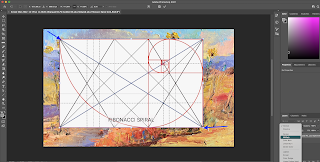Painting and Mathematics and The Founding of Carthage
Worth posting again. In 2019, a mathematician, painter and long-time friend, Joel Spruck, from my Courant Institute days, proved a historic conjecture that is a generalization of the Dido's conjecture: find the shape enclosed by a given 'string' with the largest area. I just reread the article and wanted to highlight the last part on painting and doing math:
For Spruck, doing math is similar to painting—he experiences both as a form of meditation. Two of his own canvases adorn his office.
"You get in a certain space," he says. "When you're really thinking about things, it's like being in a meditative state. Hours and hours go by and you don't even realize it.
"You take a blank canvas, you have certain fundamental rules, but it's all open. And the other thing that's like with painting, or anything else, is to love the challenges. It's not whether you succeed in the moment; it's to love the process of being lost in it."
Also in the article:
In about 900 B.C., the Phoenician princess Dido—overthrown by her ruthless brother—fled to Africa to buy land for herself and her followers. As told in Virgil's Aeneid, King Jarbas offered her as much land as she could enclose with an ox hide.
Clever Dido cut the hide into extremely thin strips. Placing them end to end, and using the Mediterranean Sea as one edge, she formed a circle that was as large as her cord could possibly allow—and plenty big enough for the foundation of what would become the city of Carthage.
....
"There are many possible shapes, and nature picks the one using the least amount of energy," Spruck says. It follows that the shape that encloses a given area with the smallest possible perimeter is the circle—or, venturing into three dimensions, the sphere.
Simple enough. But things get trickier when you want to generalize this idea beyond circles and spheres to more complicated situations. Recently, Spruck and a colleague took on that challenge and succeeded in proving a long-standing conjecture that the same principle would hold true for other geometries. The proof is an important step for the field of mathematical physics—which goes back to the 17th or 18th century—because it's an issue that connects to many other problems.
Do read the whole article: https://hub.jhu.edu/2019/11/07/joel-spruck-mathematics-cartan-hadamard-manifolds-proof-science/



